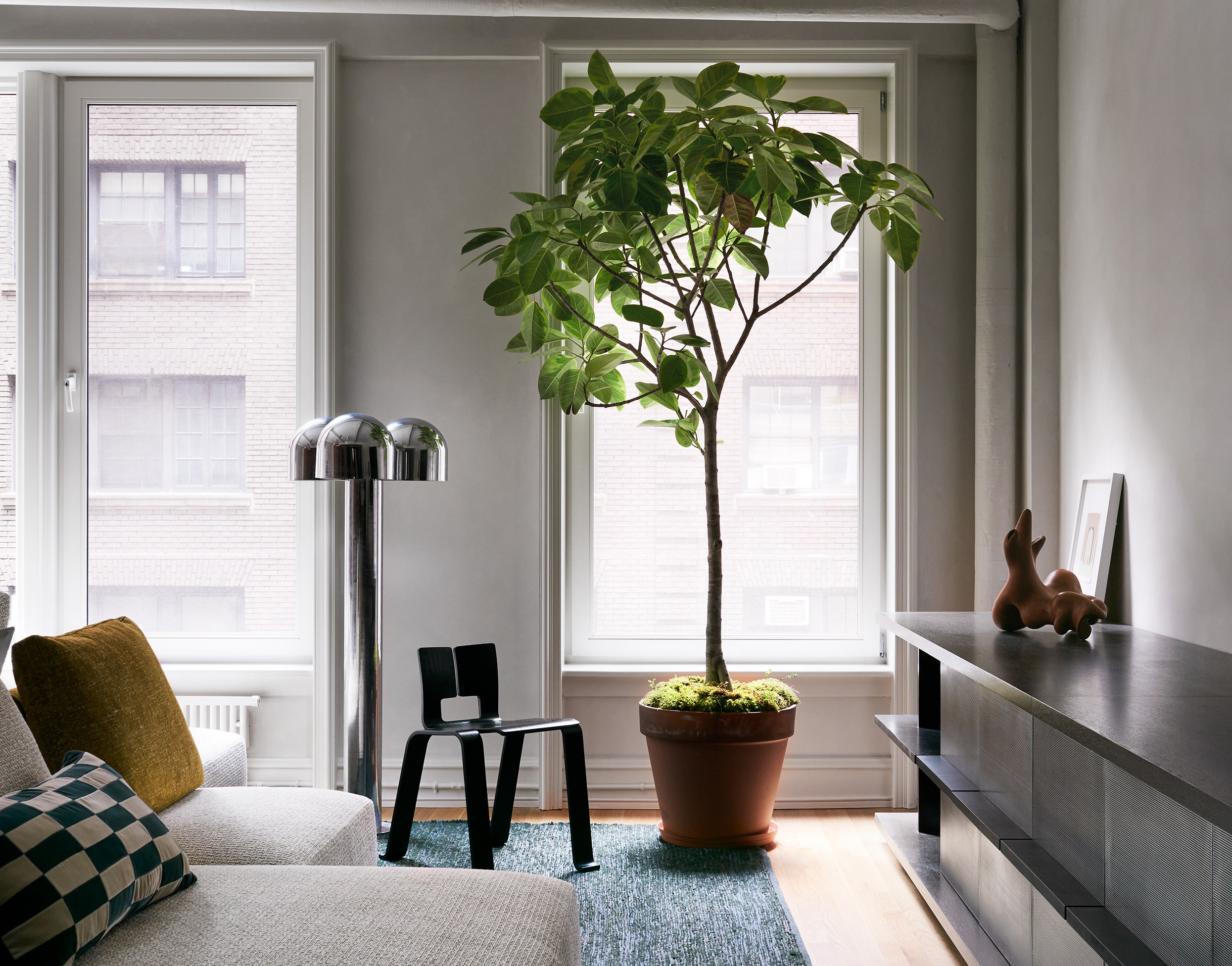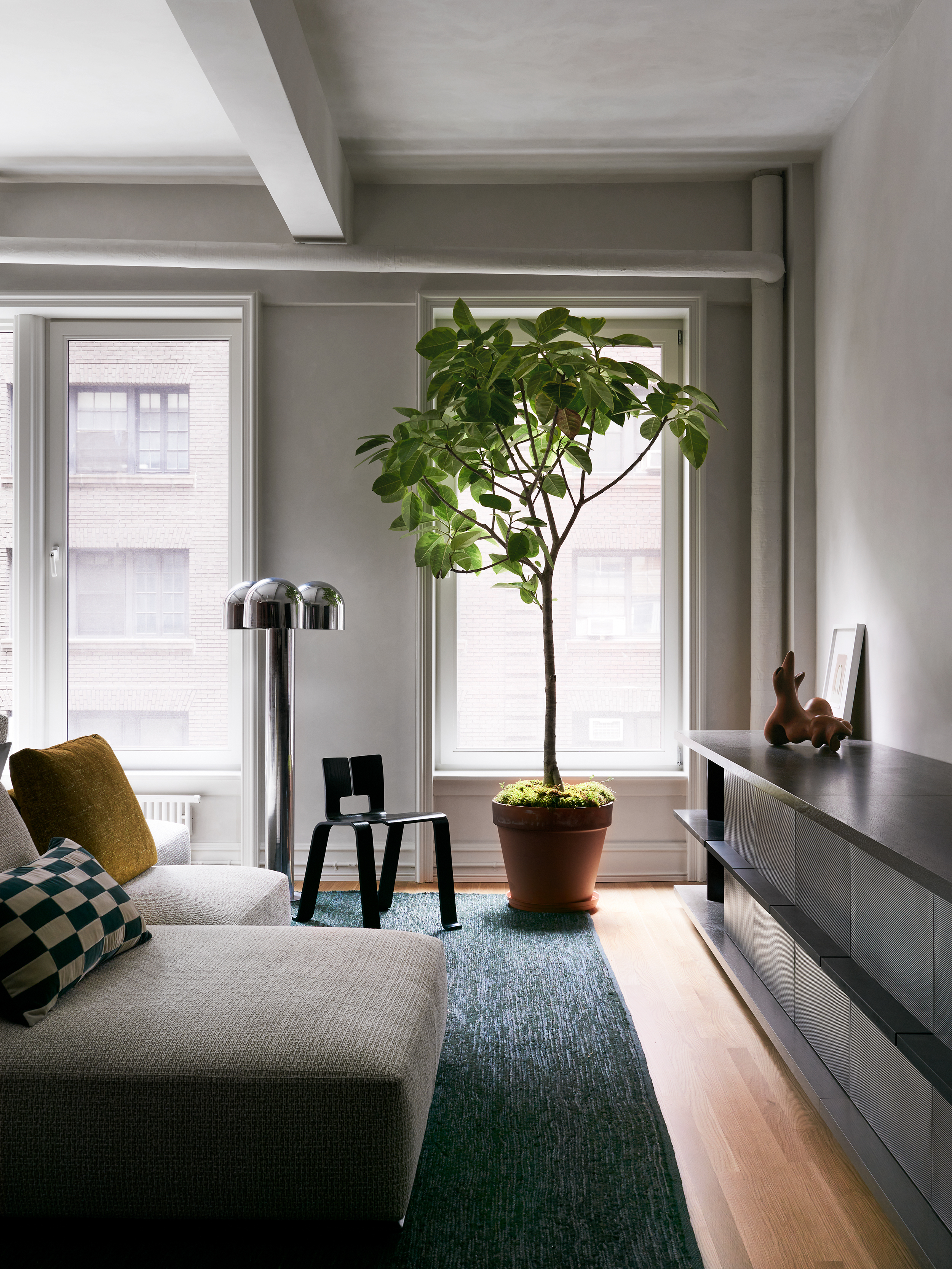
We all know what a difference houseplants can make to our interiors and, in our books, the more the merrier. 'Plantscaping' inside our homes is becoming increasingly popular, with many of us turning to dramatic displays akin to a tropical jungle to decorate dark corners and brighten boring walls. But, as it turns out, lots of us are missing trick with our foliage, and this simple planting technique could be exactly what your space needs.
The idea in question? Underplanting. You might have heard it used when potting up outdoor planters and even if you haven't, you've almost certainly seen it. As the name suggests, this planting method involves using smaller shrubs or flowers beneath larger plants or trees to bring more color and variety to your display, and it needn't be reserved for our outdoor containers only. To really elevate your houseplants, why not incorporate more than one variety in the same pot?
According to Paris Lalicata, plant expert at The Sill, more of us should be embracing an assortment of houseplants. 'Multiple houseplants in the same container can create a beautiful and visually appealing display,' she says. 'Assortments allow you to mix and match plants with different leaf shapes, sizes, colors, and textures, creating a visually dynamic display that mimics the diversity found in nature. This can help to add more interest and depth to your indoor space, especially if you have a special occasion coming up!'
Looking for a new way to embrace decorating with plants? Take this as your sign. Here's everything you need to know about underplanting with houseplants for a fuller foliage display with no bare soil in sight.
How do you underplant with houseplants?

If you've been keeping up with the latest houseplant trends, we can almost guarantee you have a lone fiddle leaf fig in a corner of your home. If not one of those, then a monstera is sure to be a close second. These larger plants make a beautiful accent of greenery, but only from the stem up. Down by the rim of your planter you're met with nothing but bare soil.
That's where this planting trick comes into play. Why not make use of that soil by incorporating a few smaller plants inside the same pot? It's so easy to do, and besides filling your space with even more foliage, you're safe in the knowledge that you won't be giving up any more space inside your home to your current houseplant obsession. There are a few points to bear in mind before you get started though.
1. Match plants with similar requirements
'It’s best to create an assortment of plants that have the same care requirements like sunlight, environment and especially watering,' explains Paris Lalicata of The Sill. 'This ensures the health and longevity of all the plants in the planter.'
Justin Hancock, Director of Research & Development and Horticultural Content at Costa Farms agrees. 'First start with growing conditions,' he says. 'A thirsty plant like a Peace Lily, for example, can be difficult to coexist with a low-water succulent like a Jade Plant. Also think about light, especially if you have lower light levels—most any plants can grow well in bright indoor light (even if they’re labeled as tolerating low light), but plants that like bright light won’t do okay in low light.' In short, if you decide to choose some of the best houseplants for low light, be sure to cater to their needs and don't be tempted to throw in a sun-loving plant just because you can (because, realistically, you can't)!
@emlivingherbestlife ♬ Dreamy Vibes - Ocean Bay Jazz
2. Consider the growth rate
According to Paris, you’ll also want to consider the maturity size of each plant in the planter to manage your assortment and how it will likely fill out overtime. 'Generally, taller plants should be placed in the center or back of the assortment and low growing or trailing plants in the front or around the edges,' she says. 'Be sure to assess their growth regularly and prune or adjust the assortment as needed to keep it balanced.'
Justin agrees. 'You don’t want a situation where one plant completely takes over and crowds out its neighbors,' he says. 'For example, it’s common to see folks want to put together three different varieties of Pothos together in one planter. While it looks great, if one variety is highly variegated with lots of white, it’ll be a much slower grower than one (like Global Green) that has a lot of green and could get buried.'
The same goes for your beloved fiddle leaf fig or monstera. 'If you have a houseplant tree like a Ficus with a nice straight trunk, you might think it could be fun to grow a climbing vine like a Little Swiss Monstera up the trunk,' notes Justin. 'But after a few months when the Monstera gets to the top of the trunk and into the Ficus leaves, it gets harder to manage and less attractive.'
What houseplants should you plant together?

With all that in mind, you might feel at a loss when deciding which houseplants you can safely underplant among your larger greenery, but that's where we're here to help. 'If you’re just starting out, try different plants of the same variety,' suggests Justin. 'For example, Raven and Chameleon ZZ both like the same conditions and have similar growth rates (and the contrast they create looks fabulous together). Many different varieties of Aglaonema are also pretty consistent in how they grow and can give you an interesting look by mixing and matching.' Paris also recommends putting tropical plants together such as a Ficus and Philodendron or, on the other end of the spectrum, low maintenance plants such as succulents.
For a full display of foliage, make sure you incorporate a wide variety of leaf shapes, sizes, and textures to add visual interest, and don't forget color, either. 'You can opt for a monochromatic palette for a cohesive look or mix contrasting colors for a vibrant display,' says Paris. 'For example, a Pink Fittonia and a Snow White Waffle Plant enjoy similar conditions and have pink foliage that plays off each other nicely,' adds Justin, who also flags the importance of plant shape. 'The upright, sword-like leaves of Sansevieria, for example, are an excellent contrast to the lush, mounding form of Silver Bay Aglaonema. Or allowing Neon Pothos to trail from a large container or basket that also holds an upright plant can be visually thrilling.'
There's one word of warning from Paris, however, and while it might sound technical, it's easily avoided. 'Research if any of the plants you are working with display allelopathy which is the process where plants use biochemicals to signal and communicate to one another to suppress the growth or even kill other plants growing in their space,' she advises. 'For example, Monsteras should not be planted in the same pot as any other plant as they suppress the growth of other plants around them. Most other houseplants are fair game for planting together luckily, but some outdoor trees and garden plants like sunflowers and goldenrod can’t be planted with others.'
This might be a big step on your plant parenting journey, but the effects are so worthwhile you'll soon be underplanting all your larger houseplants in no time. Have fun experimenting with statement arrangements and, as Justin nots, don’t be afraid of a little trial and error. 'Sometimes experiments work out and other times you might need to separate your plants and try different combinations, but that’s half the fun!'






